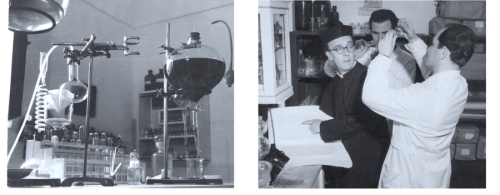Capri : ‘Via Camerelle’ of Carthusia’ luxury from nature
by Venetia Kapernekas
 photo@ Nefeli Brandhorst
photo@ Nefeli Brandhorst
“Via Camerelle” _ Note Room fragnance ; ‘Lemon, Seawater & Jasmin”_’the flavour of a place enclosed in a trace of notes’
This fragrance signed “Via Camerelle”_ Note Room, of Carthusia, a small niche perfume house from the italian island of Capri. This scent shares its name with the most prestigious street of the island Capri; it holds the freshness of lemon and orange, mixed with the fragrant notes of sea moss and cedar wood create a flavour amazingly akin to the natural yearning of the sea, flowers and genuine living. My lovely teenage daughter Ana Nefeli was for a day in Capri and she brought me this fabulous scent being aware of my love for those citrus cents.
There is a beautiful story behind “Cathusia” …in 1380, the father prior of the Carthusian Monastery of St. James, caught unawares by the news of the arrival of Queen Joan of Anjou on Capri, picked a bouquet of the most beautiful flowers of the island; these remained in the same water for three days and, as he went to throw them away, the prior noticed that it had acquired a mysterious fragrance unknown to him. So he turned to the friar versed in alchemy, who traced the origin of the scent to the “Garofilium Silvestre Caprese” … in 1948 the Prior of the Charterhouse found the old perfume formulae and, upon obtaining permission from the Pope, revealed them to a chemist from Piemonte in the North of Italy, and thus created the smallest perfume laboratory in the world, calling it “Carthusia”, i.e.”Charter house”




International distribution of Carthusia began in the early 2000s, when perfumer Laura Tomato reworked four fragrances — Mediterraneo, Fiori di Capri, Io Capri and Ligea La Sirena — reportedly based on old formulas developed by the Carthusian monks at the Certosa di San Giacomo.

The symbol of the firm, was created in 1948 by the painter Mario Laboccetta. It portrays a “flower siren” that brings to mind the surreal and mythological landscapes of Capri’s heritage. She appears to be in the midst of an evolution, blooming with myriad colorful flovers, from wich Carthusia perfumes flow, achieving a logo wich recalls both art and nature in all their forms.
Carthusia has put into practice its centuries-old knowledge in order to develop a culture of perfume unique in the world. Over the years, it has refined its mastery over the olfactory senses, perfecting and structuring its discernment of essences, in order to grant patrons the purest and most titillating emotions. Nowadays, as was done in the past, all stages of production are carried out by hand to guarantee accurate application of the natural methods involved, and the exquisite care of traditional craftsmanship.

Elegant packaging for conveying luxury; a beautiful box, high-quality paper with meticulously crafted details, the finest rice paper, hand wrapped and folded around it.


photo@ Nefeli Brandhorst
“Carthusia” brings me a literary memory of ‘ The Charterhouse of Parma” the novel by Stendhal published in 1839, telling the story of an Italian Nobleman, in the Napoleonic era; The Charterhouse of Parma chronicles the adventures of the young Italian nobleman Fabrice del Dongo from his birth in 1798 to his death. Fabrice spends his early years in his family’s castle on Lake Como, while most of the rest of the novel is set in a fictionalised Parma.
